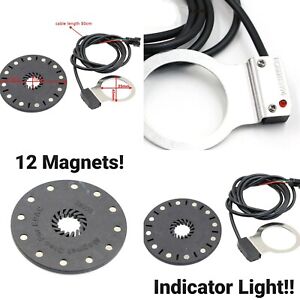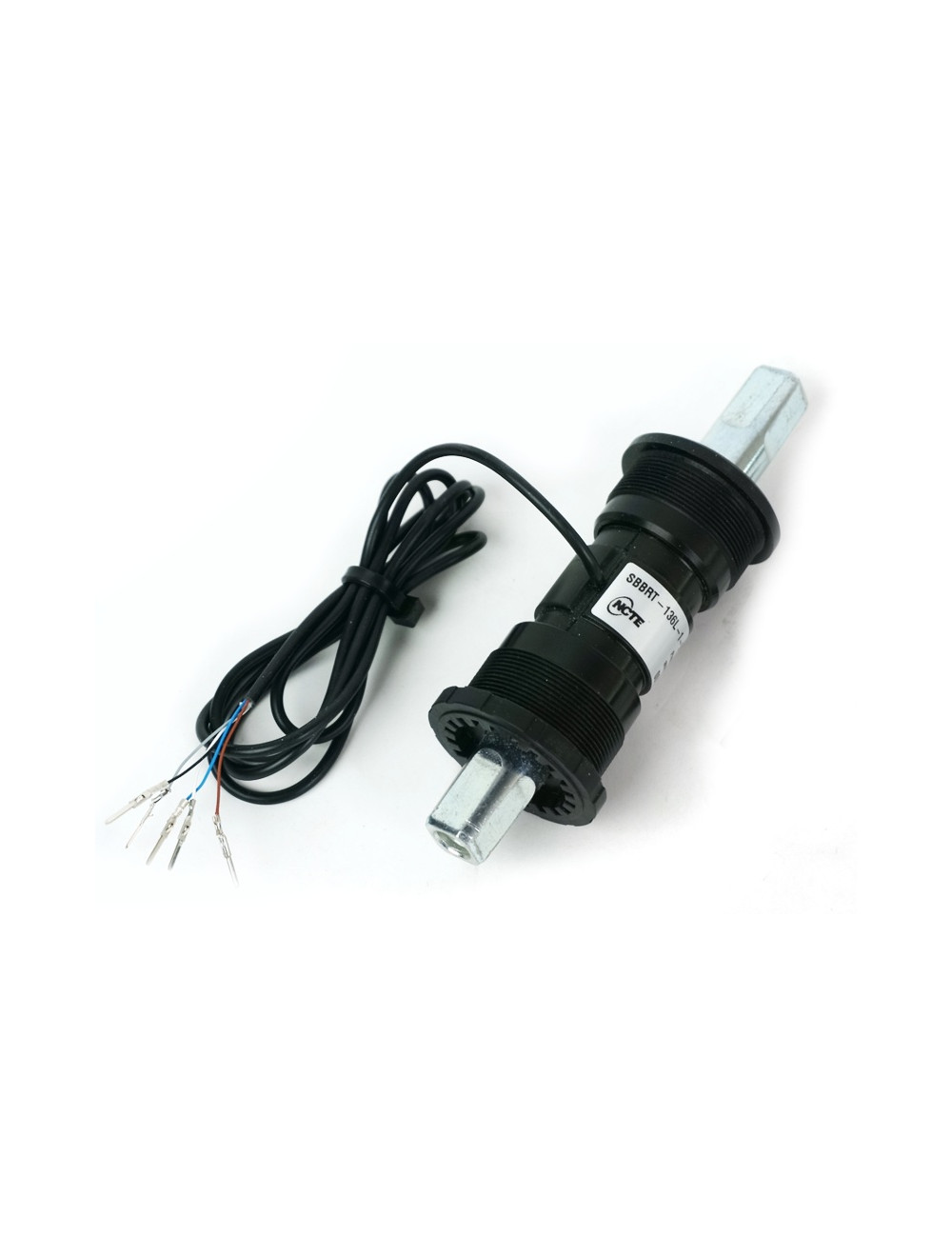Hello everyone.
I'm of course new to this site, new to e-bikes and even sort of new to bicycling (I haven't done it in a long time). I'd like to build an e-bike as a winter project, and while I have read the FAQs and have a general idea of what I intend to do, I still have some lingering questions and in any case I thought I'd get the advice of experienced folks as to how, exactly, to begin. I've seen how you guys appear to enjoy sharing your knowledge with n00bs. I'll try not to be too n00by around here, but basically I am starting from zero (though I have read the FAQs).
I am 57 years old and just stated (like this week!) bicycling to work (7½ miles each way). What happened is I bought a new bicycle for my partner for her birthday this year, and that got me to pull my 2004 Giant Sedona out of mothballs and do some riding around of my own. My typical exercise is hiking and mountaineering, but for various reason I haven't done much of that lately. I discovered I really enjoy the bicycle commute, though there is a hill involved, and that's what got me interested in ebikes. I am a tinkerer, so doing a conversion makes a lot of sense, especially as I have (I think, more on this later) a decent donor in the form of the old Sedona. I'm nearly six and a half feet tall and the Sedona is too small for serious pedaling:

I decided if I really got into bicycling I'd buy a new larger bicycle, but in the meantime the Sedona works okay and maybe I can electrify it.
I don't ride in the dark, so my bicycle commuting season will end in November with Daylight Savings (if not sooner, depending on when it gets light or dark around here). That makes winter a perfect time to work out what I need to do and then execute and test the conversion.
As I said I read the FAQs and I believe I have decided on a DD rear hub set-up (for its simplicity and also to get regen); with whatever compatible controller is recommended by the vendor (I am liking Grin Technologies these days, but a US-based vendor would be cool too); and a LiFePo4 battery so I don't have to worry about burning down the house (or office). The FAQs are almost good enough you could spec a system from them exclusively, without asking questions, but I feel my requirements are slightly different from the typical Endless Sphere contributor, so I might get away with less system than the FAQs seem to indicate.
Riding style
I have no desire at all to ride at high speeds. I would like to pedal, so I guess I'm looking for some kind of pedal assist. An electric will simply make the daily commute less fatiguing than it otherwise might be. The main requirement I have for the system is the hill at the end of the ride home. I really dislike climbing that hill, especially at the end of a long day at work. I've worked out the hill slope:
Pembroke Street
rise: 76 feet
run: 2,623 feet
slope: 3%
Parkway Drive
rise: 34 feet
run: 519 feet
slope: 7%
Combined
rise: 110 feet
run: 3,142 feet
slope: 4%
Okay, that might not look like much, but it takes a lot of the fun out of the ride home. On the other hand, that's all the hill climbing I will probably ever need to do. The rest of my route (and most of the rest of Reno) is pretty flat (I stay off the streets by riding along the Truckee River bike path as much as possible).
Donor bike
Given my relatively mild requirements, I'm hoping I can get away with a more lightweight set-up than a higher performance rider would require, and so my aluminum Giant Sedona with rim brakes would be an acceptable donor. That's one of the main things I'd like to get answered here.
If it's simply not practical, I have many other options. Every year hundreds, maybe thousands of bicycles are abandoned at the Burning Man festival, and they are typically donated to Reno Bike Project or the Kiwanis Club, so it's easy to find donor bikes (though of course I am unlikely to find anything especially fancy or exotic). But I'd like to use the Sedona if possible.
In a nutshell:
General requirements: Daily 15 mile commute (7½ miles each way), mostly flat, with under a mile of 4% average slope on the ride home. No high speeds. Some pedal assist and regen.
Type of system: Direct drive rear hub, sized for the above usage (I understand my requirements sort of indicate a simpler mid-motor setup, but you guys have sold me on hubs, and I'm also not interested in shifting gears all the time, but I can be convinced otherwise). The lighter the better, based on my requirements.
Battery: LiFePo4. Can have chargers at home and at the office.
Proposed donor: 2004 Giant Sedona, aluminum frame, rim brakes, grip shifters (any or all three of these could be issues, which is why I wanted to bounce them off you guys).
Preferred vendor(s): One of the reasons I'm doing a conversion is to save a few dollars over buying a new bicycle, but I have no interest in buying the cheapest parts just because they are the cheapest. My requirements probably don't justify the highest end systems, but I don't want crap, either, just because it's cheap.
If I could get some pointers as to how to size the system I need, that would help get me going. Also if any of my assumptions are way off base, I'd love to hear about it.
Thanks for any assistance,
Mitch in Reno
I'm of course new to this site, new to e-bikes and even sort of new to bicycling (I haven't done it in a long time). I'd like to build an e-bike as a winter project, and while I have read the FAQs and have a general idea of what I intend to do, I still have some lingering questions and in any case I thought I'd get the advice of experienced folks as to how, exactly, to begin. I've seen how you guys appear to enjoy sharing your knowledge with n00bs. I'll try not to be too n00by around here, but basically I am starting from zero (though I have read the FAQs).
I am 57 years old and just stated (like this week!) bicycling to work (7½ miles each way). What happened is I bought a new bicycle for my partner for her birthday this year, and that got me to pull my 2004 Giant Sedona out of mothballs and do some riding around of my own. My typical exercise is hiking and mountaineering, but for various reason I haven't done much of that lately. I discovered I really enjoy the bicycle commute, though there is a hill involved, and that's what got me interested in ebikes. I am a tinkerer, so doing a conversion makes a lot of sense, especially as I have (I think, more on this later) a decent donor in the form of the old Sedona. I'm nearly six and a half feet tall and the Sedona is too small for serious pedaling:

I decided if I really got into bicycling I'd buy a new larger bicycle, but in the meantime the Sedona works okay and maybe I can electrify it.
I don't ride in the dark, so my bicycle commuting season will end in November with Daylight Savings (if not sooner, depending on when it gets light or dark around here). That makes winter a perfect time to work out what I need to do and then execute and test the conversion.
As I said I read the FAQs and I believe I have decided on a DD rear hub set-up (for its simplicity and also to get regen); with whatever compatible controller is recommended by the vendor (I am liking Grin Technologies these days, but a US-based vendor would be cool too); and a LiFePo4 battery so I don't have to worry about burning down the house (or office). The FAQs are almost good enough you could spec a system from them exclusively, without asking questions, but I feel my requirements are slightly different from the typical Endless Sphere contributor, so I might get away with less system than the FAQs seem to indicate.
Riding style
I have no desire at all to ride at high speeds. I would like to pedal, so I guess I'm looking for some kind of pedal assist. An electric will simply make the daily commute less fatiguing than it otherwise might be. The main requirement I have for the system is the hill at the end of the ride home. I really dislike climbing that hill, especially at the end of a long day at work. I've worked out the hill slope:
Pembroke Street
rise: 76 feet
run: 2,623 feet
slope: 3%
Parkway Drive
rise: 34 feet
run: 519 feet
slope: 7%
Combined
rise: 110 feet
run: 3,142 feet
slope: 4%
Okay, that might not look like much, but it takes a lot of the fun out of the ride home. On the other hand, that's all the hill climbing I will probably ever need to do. The rest of my route (and most of the rest of Reno) is pretty flat (I stay off the streets by riding along the Truckee River bike path as much as possible).
Donor bike
Given my relatively mild requirements, I'm hoping I can get away with a more lightweight set-up than a higher performance rider would require, and so my aluminum Giant Sedona with rim brakes would be an acceptable donor. That's one of the main things I'd like to get answered here.
If it's simply not practical, I have many other options. Every year hundreds, maybe thousands of bicycles are abandoned at the Burning Man festival, and they are typically donated to Reno Bike Project or the Kiwanis Club, so it's easy to find donor bikes (though of course I am unlikely to find anything especially fancy or exotic). But I'd like to use the Sedona if possible.
In a nutshell:
General requirements: Daily 15 mile commute (7½ miles each way), mostly flat, with under a mile of 4% average slope on the ride home. No high speeds. Some pedal assist and regen.
Type of system: Direct drive rear hub, sized for the above usage (I understand my requirements sort of indicate a simpler mid-motor setup, but you guys have sold me on hubs, and I'm also not interested in shifting gears all the time, but I can be convinced otherwise). The lighter the better, based on my requirements.
Battery: LiFePo4. Can have chargers at home and at the office.
Proposed donor: 2004 Giant Sedona, aluminum frame, rim brakes, grip shifters (any or all three of these could be issues, which is why I wanted to bounce them off you guys).
Preferred vendor(s): One of the reasons I'm doing a conversion is to save a few dollars over buying a new bicycle, but I have no interest in buying the cheapest parts just because they are the cheapest. My requirements probably don't justify the highest end systems, but I don't want crap, either, just because it's cheap.
If I could get some pointers as to how to size the system I need, that would help get me going. Also if any of my assumptions are way off base, I'd love to hear about it.
Thanks for any assistance,
Mitch in Reno




